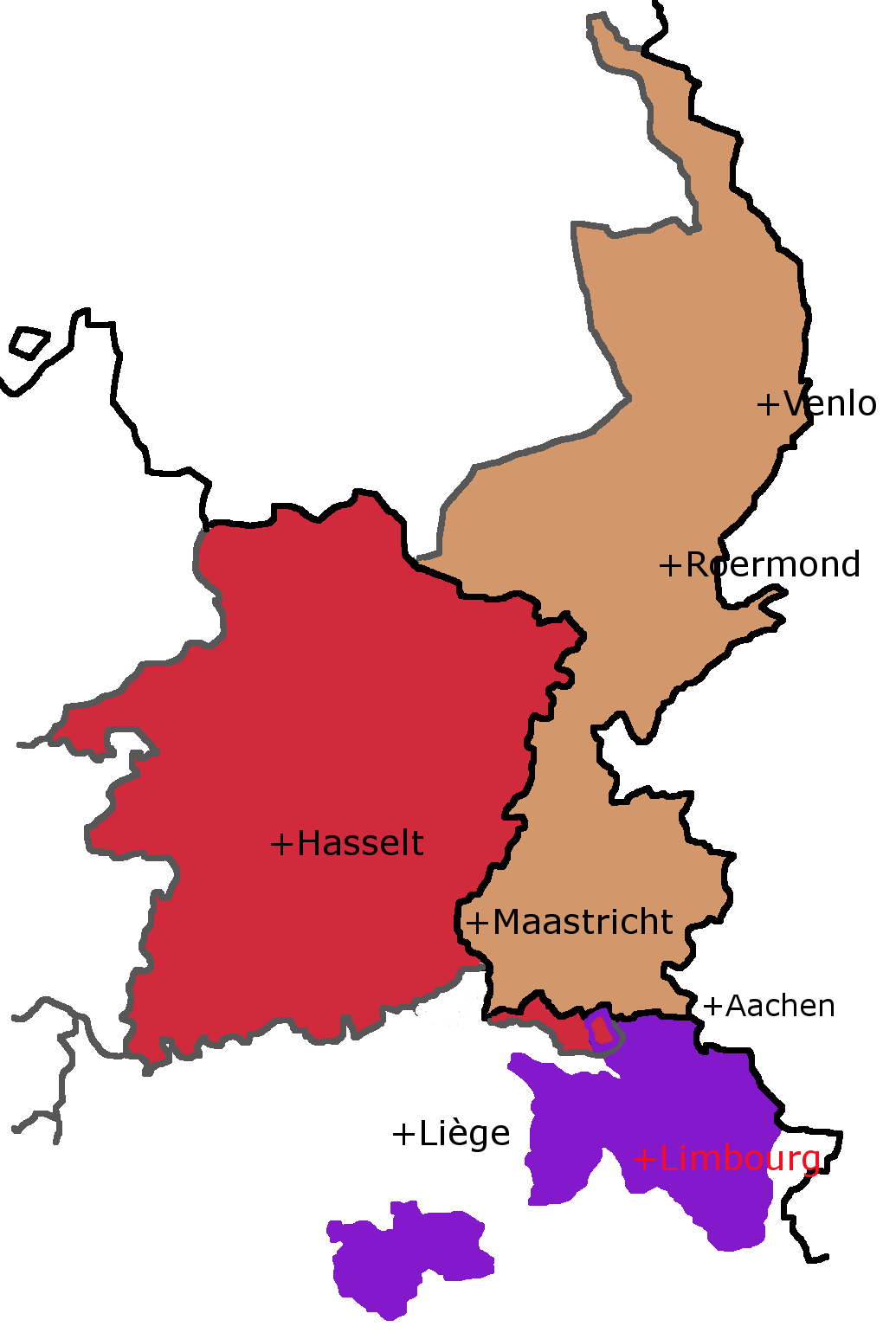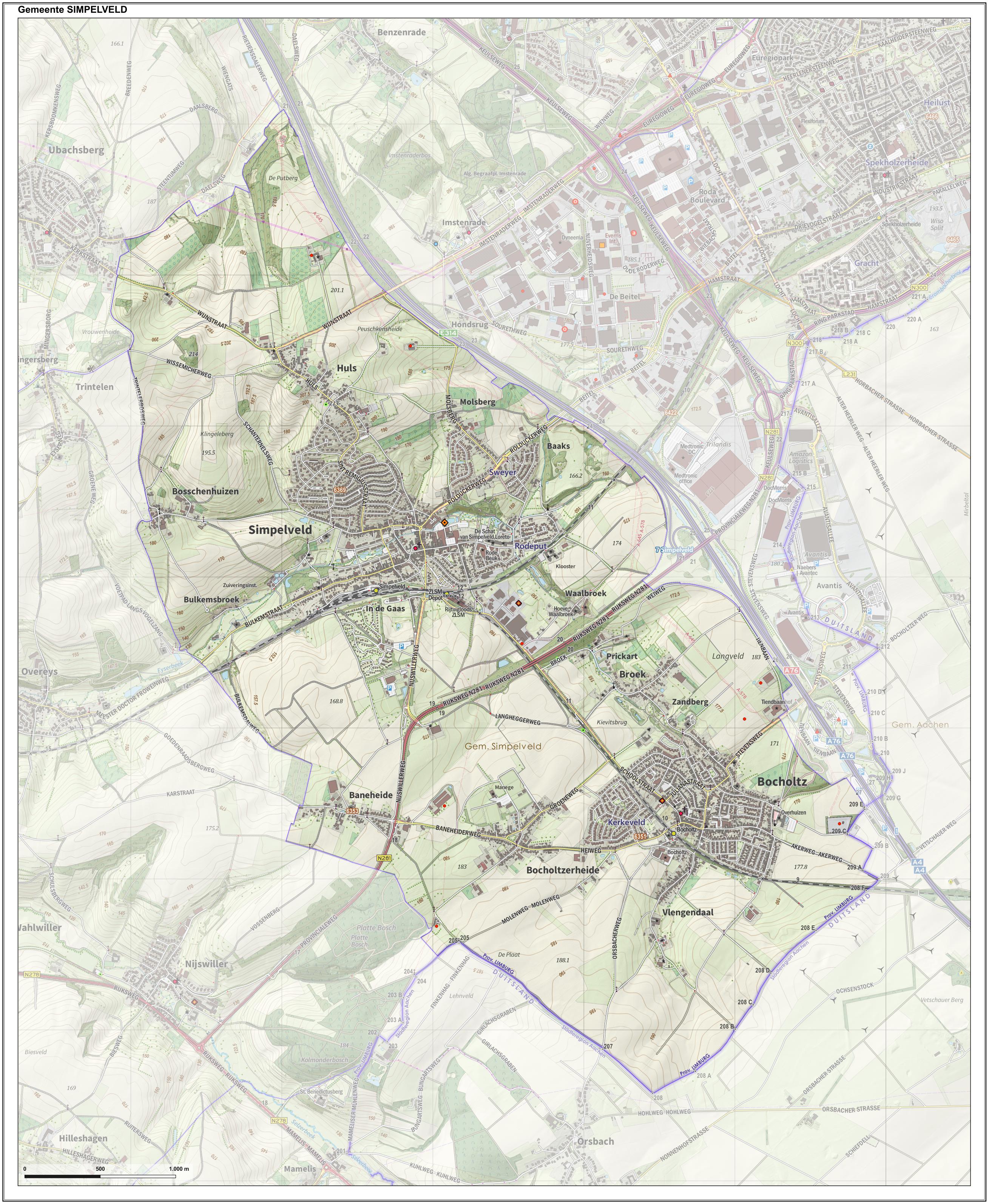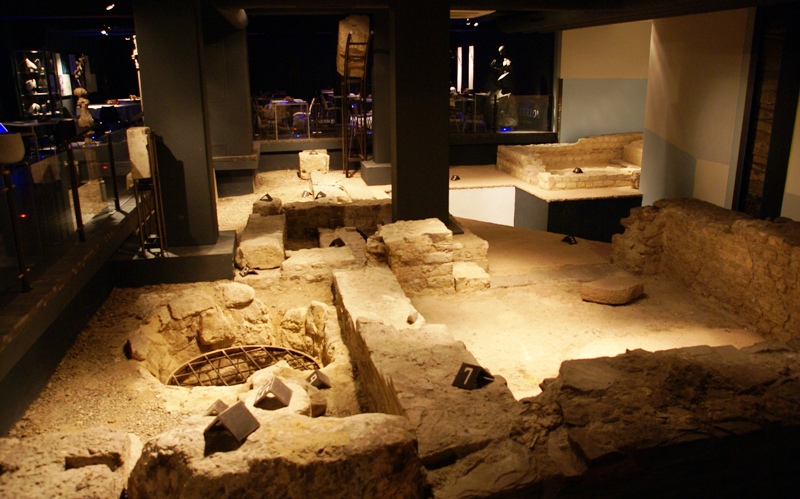|
Molsberg (Netherlands)
Molsberg (), English: ''Mols hill'') is a hamlet in the southeastern Netherlands. It is located close to the village of Simpelveld in the municipality of Simpelveld, Limburg, about 20 km east of Maastricht. The village has a population of 300 people after it was expanded with 54 new houses in 2004. The name Molsberg refers to the hill (berg) it is built on and to the Mols family. Molsberg is also the name of the hill the village is built on. This hill goes up to 212m with an average incline of 4% and is part of the Amstel Gold Race. The farm located at Molsberg 96 dates from 1732 and has been designated a national monument A national monument is a monument constructed in order to commemorate something of importance to national heritage, such as a country's founding, independence, war, or the life and death of a historical figure. The term may also refer to a sp .... [...More Info...] [...Related Items...] OR: [Wikipedia] [Google] [Baidu] |
Netherlands
) , anthem = ( en, "William of Nassau") , image_map = , map_caption = , subdivision_type = Sovereign state , subdivision_name = Kingdom of the Netherlands , established_title = Before independence , established_date = Spanish Netherlands , established_title2 = Act of Abjuration , established_date2 = 26 July 1581 , established_title3 = Peace of Münster , established_date3 = 30 January 1648 , established_title4 = Kingdom established , established_date4 = 16 March 1815 , established_title5 = Liberation Day (Netherlands), Liberation Day , established_date5 = 5 May 1945 , established_title6 = Charter for the Kingdom of the Netherlands, Kingdom Charter , established_date6 = 15 December 1954 , established_title7 = Dissolution of the Netherlands Antilles, Caribbean reorganisation , established_date7 = 10 October 2010 , official_languages = Dutch language, Dutch , languages_type = Regional languages , languages_sub = yes , languages = , languages2_type = Reco ... [...More Info...] [...Related Items...] OR: [Wikipedia] [Google] [Baidu] |
Flag Of Limburg (Netherlands)
The flag of Dutch Limburg is a flag with the height:width ratio of 2:3. It consists of 3 rows of colors in a size ratio of 2:1:2. The colors used are (from top to bottom) white, blue and gold (yellow). In the flag there is a symbol of the red Limburgian lion with a double tail, facing the flagpole. The smaller blue middle row is symbolizing the river Meuse. This flag is not used in Belgian Limburg, which has its own, different, flag. Flags of the Netherlands Flag A flag is a piece of fabric (most often rectangular or quadrilateral) with a distinctive design and colours. It is used as a symbol, a signalling device, or for decoration. The term ''flag'' is also used to refer to the graphic design emp ... Flags displaying animals Flags introduced in 1953 {{Europe-flag-stub ... [...More Info...] [...Related Items...] OR: [Wikipedia] [Google] [Baidu] |
Limburg (Netherlands)
Limburg (, ) is the southernmost of the twelve provinces of the Netherlands. It is bordered by Gelderland to the north and by North Brabant to its west. Its long eastern boundary forms the international border with the state of North Rhine-Westphalia in Germany. To the west is the international border with the similarly named Belgian province of Limburg, part of which is delineated by the river Meuse. The Vaalserberg is on the extreme southeastern point, marking the tripoint of the Netherlands, Germany and Belgium. Limburg's main municipalities are the provincial capital Maastricht (population 120,837 as of January 2022), Venlo (population 102,176) in the northeast, as well as Sittard-Geleen (population 91,760, bordering both Belgium and Germany) and Heerlen (population 86,874) in the south. More than half of the population, approximately 650,000 people, live in the south of Limburg, which corresponds to roughly one-third of the province's area proper. In South Limbu ... [...More Info...] [...Related Items...] OR: [Wikipedia] [Google] [Baidu] |
Simpelveld Vlag
Simpelveld (; li, Zumpelveld ) is a municipality and a town in the southeastern Netherlands. It is part of the municipal cooperative unit Parkstad Limburg. Simpelveld is part of the ''Mergelland'', named after the presence of chalk (mergel), hill country popular with tourists. The Mergellandroute passes through the town. The population centre of Simpelveld has 28 national monuments, amongst which are the Oude Molen and the Saint Remigius Church. Simpelveld has a heritage railway station and is the home base of the South Limburg Railway Company. On one weekend in October there is a Day out with Thomas from the children's television series Thomas and Friends. Population centres *Bocholtz *Simpelveld Besides these official centres there are other hamlets which fall under the municipality: Religion The municipality has two churches within its borders: *James the Greater Church in Bocholtz *Saint Remigius Church in Simpelveld The city also has two monasteries, these are ... [...More Info...] [...Related Items...] OR: [Wikipedia] [Google] [Baidu] |
Simpelveld
Simpelveld (; li, Zumpelveld ) is a municipality and a town in the southeastern Netherlands. It is part of the municipal cooperative unit Parkstad Limburg. Simpelveld is part of the ''Mergelland'', named after the presence of chalk (mergel), hill country popular with tourists. The Mergellandroute passes through the town. The population centre of Simpelveld has 28 national monuments, amongst which are the Oude Molen and the Saint Remigius Church. Simpelveld has a heritage railway station and is the home base of the South Limburg Railway Company. On one weekend in October there is a Day out with Thomas from the children's television series Thomas and Friends. Population centres *Bocholtz *Simpelveld Besides these official centres there are other hamlets which fall under the municipality: Religion The municipality has two churches within its borders: * James the Greater Church in Bocholtz * Saint Remigius Church in Simpelveld The city also has two monasteries, thes ... [...More Info...] [...Related Items...] OR: [Wikipedia] [Google] [Baidu] |
Central European Time
Central European Time (CET) is a standard time which is 1 hour ahead of Coordinated Universal Time (UTC). The time offset from UTC can be written as UTC+01:00. It is used in most parts of Europe and in a few North African countries. CET is also known as Middle European Time (MET, German: MEZ) and by colloquial names such as Amsterdam Time, Berlin Time, Brussels Time, Madrid Time, Paris Time, Rome Time, Warsaw Time or even Romance Standard Time (RST). The 15th meridian east is the central axis for UTC+01:00 in the world system of time zones. As of 2011, all member states of the European Union observe summer time (daylight saving time), from the last Sunday in March to the last Sunday in October. States within the CET area switch to Central European Summer Time (CEST, UTC+02:00) for the summer. In Africa, UTC+01:00 is called West Africa Time (WAT), where it is used by several countries, year round. Algeria, Morocco, and Tunisia also refer to it as ''Central E ... [...More Info...] [...Related Items...] OR: [Wikipedia] [Google] [Baidu] |
Central European Summer Time
Central European Summer Time (CEST), sometimes referred to as Central European Daylight Time (CEDT), is the standard clock time observed during the period of summer daylight-saving in those European countries which observe Central European Time (CET; UTC+01:00) during the other part of the year. It corresponds to UTC+02:00, which makes it the same as Eastern European Time, Central Africa Time, South African Standard Time, Egypt Standard Time and Kaliningrad Time in Russia. Names Other names which have been applied to Central European Summer Time are Middle European Summer Time (MEST), Central European Daylight Saving Time (CEDT), and Bravo Time (after the second letter of the NATO phonetic alphabet). Period of observation Since 1996, European Summer Time has been observed between 01:00 UTC (02:00 CET and 03:00 CEST) on the last Sunday of March, and 01:00 UTC on the last Sunday of October; previously the rules were not uniform across the European Union. There were propo ... [...More Info...] [...Related Items...] OR: [Wikipedia] [Google] [Baidu] |
English Language
English is a West Germanic language of the Indo-European language family, with its earliest forms spoken by the inhabitants of early medieval England. It is named after the Angles, one of the ancient Germanic peoples that migrated to the island of Great Britain. Existing on a dialect continuum with Scots, and then closest related to the Low Saxon and Frisian languages, English is genealogically West Germanic. However, its vocabulary is also distinctively influenced by dialects of France (about 29% of Modern English words) and Latin (also about 29%), plus some grammar and a small amount of core vocabulary influenced by Old Norse (a North Germanic language). Speakers of English are called Anglophones. The earliest forms of English, collectively known as Old English, evolved from a group of West Germanic ( Ingvaeonic) dialects brought to Great Britain by Anglo-Saxon settlers in the 5th century and further mutated by Norse-speaking Viking settlers starting in ... [...More Info...] [...Related Items...] OR: [Wikipedia] [Google] [Baidu] |
Hamlet (place)
A hamlet is a human settlement that is smaller than a town or village. Its size relative to a parish can depend on the administration and region. A hamlet may be considered to be a smaller settlement or subdivision or satellite entity to a larger settlement. The word and concept of a hamlet has roots in the Anglo-Norman settlement of England, where the old French ' came to apply to small human settlements. Etymology The word comes from Anglo-Norman ', corresponding to Old French ', the diminutive of Old French ' meaning a little village. This, in turn, is a diminutive of Old French ', possibly borrowed from ( West Germanic) Franconian languages. Compare with modern French ', Dutch ', Frisian ', German ', Old English ' and Modern English ''home''. By country Afghanistan In Afghanistan, the counterpart of the hamlet is the qala ( Dari: قلعه, Pashto: کلي) meaning "fort" or "hamlet". The Afghan ''qala'' is a fortified group of houses, generally with its ... [...More Info...] [...Related Items...] OR: [Wikipedia] [Google] [Baidu] |
Limburg, Netherlands
Limburg (, ) is the southernmost of the twelve provinces of the Netherlands. It is bordered by Gelderland to the north and by North Brabant to its west. Its long eastern boundary forms the international border with the state of North Rhine-Westphalia in Germany. To the west is the international border with the similarly named Belgian province of Limburg, part of which is delineated by the river Meuse. The Vaalserberg is on the extreme southeastern point, marking the tripoint of the Netherlands, Germany and Belgium. Limburg's main municipalities are the provincial capital Maastricht (population 120,837 as of January 2022), Venlo (population 102,176) in the northeast, as well as Sittard-Geleen (population 91,760, bordering both Belgium and Germany) and Heerlen (population 86,874) in the south. More than half of the population, approximately 650,000 people, live in the south of Limburg, which corresponds to roughly one-third of the province's area proper. In South Limburg, most pe ... [...More Info...] [...Related Items...] OR: [Wikipedia] [Google] [Baidu] |
Maastricht
Maastricht ( , , ; li, Mestreech ; french: Maestricht ; es, Mastrique ) is a city and a municipality in the southeastern Netherlands. It is the capital and largest city of the province of Limburg. Maastricht is located on both sides of the Meuse ( nl, Maas), at the point where the Jeker joins it. Mount Saint Peter (''Sint-Pietersberg'') is largely situated within the city's municipal borders. Maastricht is about 175 km south east of the capital Amsterdam and 65 km from Eindhoven; it is adjacent to the border with Belgium and is part of the Meuse-Rhine Euroregion, an international metropolis with a population of about 3.9 million, which includes the nearby German and Belgian cities of Aachen, Liège and Hasselt. Maastricht developed from a Roman settlement (''Trajectum ad Mosam'') to a medieval religious centre. In the 16th century it became a garrison town and in the 19th century an early industrial centre. Today, the city is a thriving cultural and regional hub. It ... [...More Info...] [...Related Items...] OR: [Wikipedia] [Google] [Baidu] |
Amstel Gold Race
The Amstel Gold Race is an annual one-day classic cycle races, classic road bicycle race, road cycling race held in the province of Limburg (Netherlands), Limburg, Netherlands. It traditionally marks the turning point of the Classic cycle races#Spring classics, spring classics, with the climbers and stage racers replacing the cobbled classics riders as the favourites. Since 1989 the event has been included in season-long competitions at the highest level of Union Cycliste Internationale, UCI, as part of the UCI Road World Cup (1989–2004), the UCI ProTour (2005–2010), UCI World Ranking (2009–2010) and since 2011 of the UCI World Tour. It is the only one-day World Tour race staged in the Netherlands and is considered the most important Dutch road cycling event. Dutchman Jan Raas holds the winning record with five victories. Dutch beer brewer Amstel Brewery, Amstel has served as the race's title sponsor since its creation in 1966. The name does not directly refer to the river ... [...More Info...] [...Related Items...] OR: [Wikipedia] [Google] [Baidu] |





